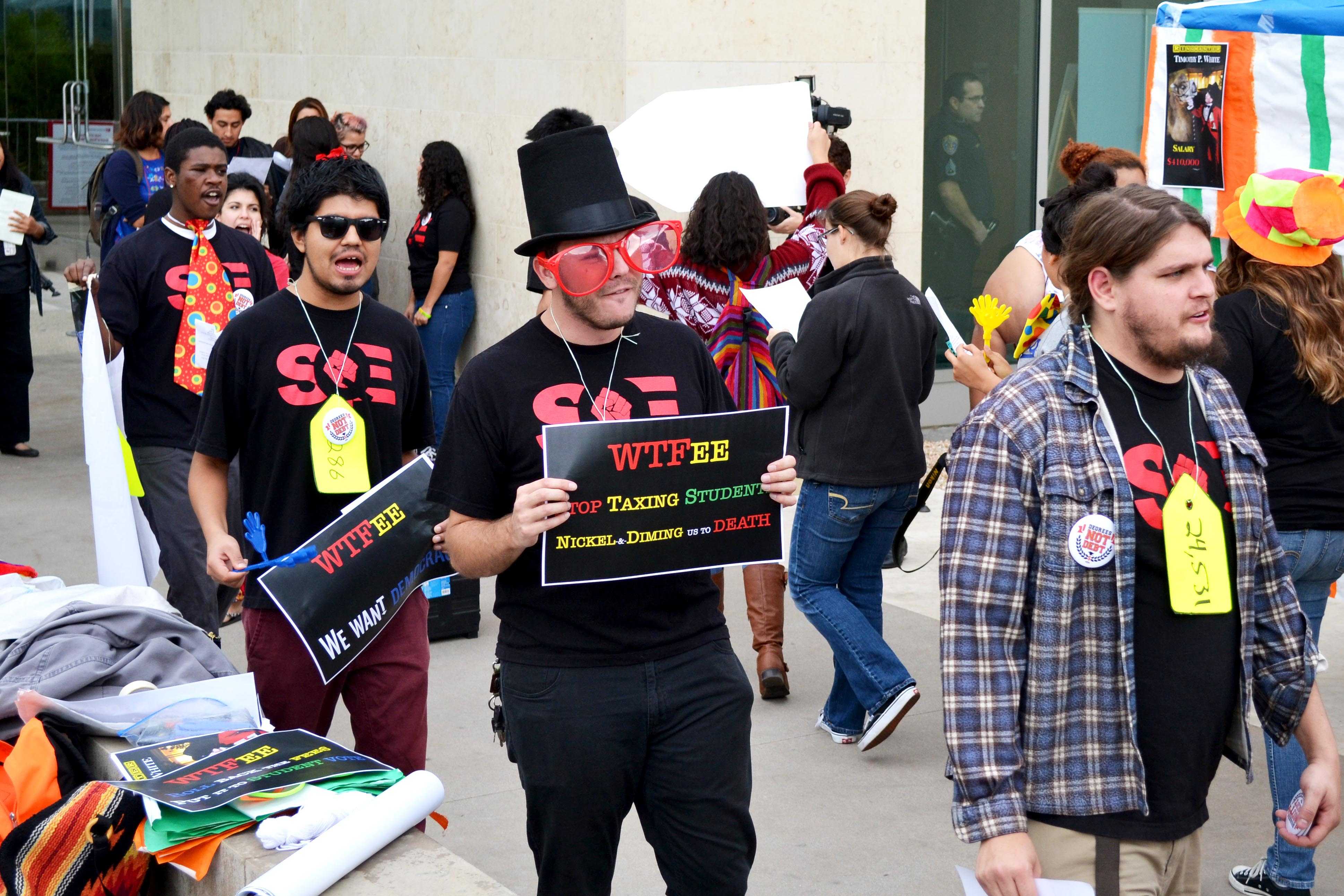Students, faculty and administrators from multiple Cal State University campuses converged in Long Beach to discuss the merits and implementation of the controversial student success fees at the CSU Board of Trustees meeting on Thursday.
Amid the sounds of protest from the Students for Quality Education emanating from just outside the chamber doors, the BOT revealed recommendations for the future of student success fees after the conclusion of its two-month study looking into the fee’s effects.
The recommendations discussed by the Working Group Report on Student Success Fees include the possibility of the fees needing a binding majority vote by the students who would be affected, a proposal that the cost of the fee and the uses of that money would have to be agreed upon by the campus president and a student fee advisory board and an idea that any new student success fees could be repealed by student vote after a period of six years.
“Throughout my participation in the Work Group, I wanted to ensure that students would be at the forefront of the campus decision making process, starting with the inception of a success fee, continuing with the allocation of the fee revenue and ensuring the transparency of the process,” Student Trustee Talar Alexarian said.
Trustee Douglas Faigin said the goal of the recommendations was to allow for more student involvement in this process that would primarily impact CSU students. California State University Long Beach’s student success fee was established through Executive Order No. 1055 by the previous CSU Chancellor, Charles B. Reed on February 28, 2012. None of the student success fees on any of the 12 campuses that have them were established by a binding student vote.
Student involvement in this process of establishing new fees has been a major concern of SQE. Students from several chapters that have been established across the CSU system were on hand to make their concerns heard during the public comments portion of the meeting and after. As the discussion continued inside the auditorium, sounds of drumming and chanting could be heard from outside as SQE marched along the front of the building.
“There’s a lack of transparency with the fees,” said Cheyenne Aldridge, a member of SQE at Sonoma State University. “Where they are going? Who they are going to? When will we see the benefits and are there going to be benefits?”
Among the changes that SQE would like to see implemented is making a binding student vote not just be a simple majority, but requiring approval of more than 50 percent of the entire campus, as election turnout on campus is typically low. They are also pushing for more transparency in how these fees are spent.
“We have a lot of buildings being built [at Sonoma State] from privatized donations,” Aldridge said. “It really struck an interest with me of how are these things going on on our campus, and I can’t get the basic essentials I need to get my education.”
SQE also presented results of its survey of roughly 3,500 students regarding student success fees attempting to find out what students would categorize as a more successful campus; the results indicated that 84 percent of students responded and said that success would be increased availability of classes and that 77 percent of students surveyed opposed the fee.
Erika Suarez, a fouth-year anthropology student and member of SQE on CSULB’s campus, argued that with more of the cost of college being passed onto the students as opposed to state funding, students should be considered stakeholders in their education. She was troubled with the process of the last increase in the student success fee, which she feels was left by former CSULB President F. King Alexander on his way out the door, without addressing it with the students.
“Shouldn’t stakeholders have a say in how money is spent?” Suarez said.
On the other end of the spectrum are concerns for giving the students too much power over the establishment and use of the student success fee. The idea of making the fee solely student-run was addressed, but brought up its own issues.
Lt. Governor Gavin Newsome, a member of the board, was concerned about the idea of certain campuses and relatively small groups of politically active students raising fees too much and pricing out middle class students from the campus. He did not want student success fees to start creating “a divide between the haves and the have nots.”
“I am all for autonomy, but accountability rests here,” Newsome said, referring to the BOT.
Newsome also questioned the use of the student success fee as simply a replacement for tuition increases, a sentiment that had been echoed by members of SQE. He asked that if these fees are helping to pay for things traditionally covered by tuition, then how is the student success fee not just tuition by another name? No specific recommendations were given regarding how to spend fee money that distinguished that money from how tuition is spent.
The BOT did not make any decisions on student success fees at Thursday’s meeting. The plan is for the Working Group to finalize its recommendations with the input from public comments and the Board by January’s meeting.




